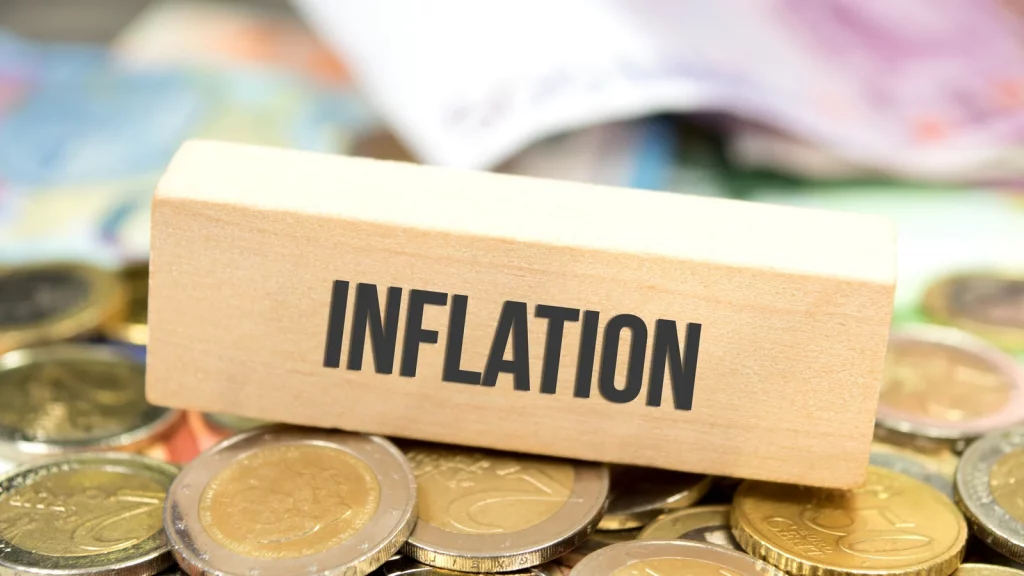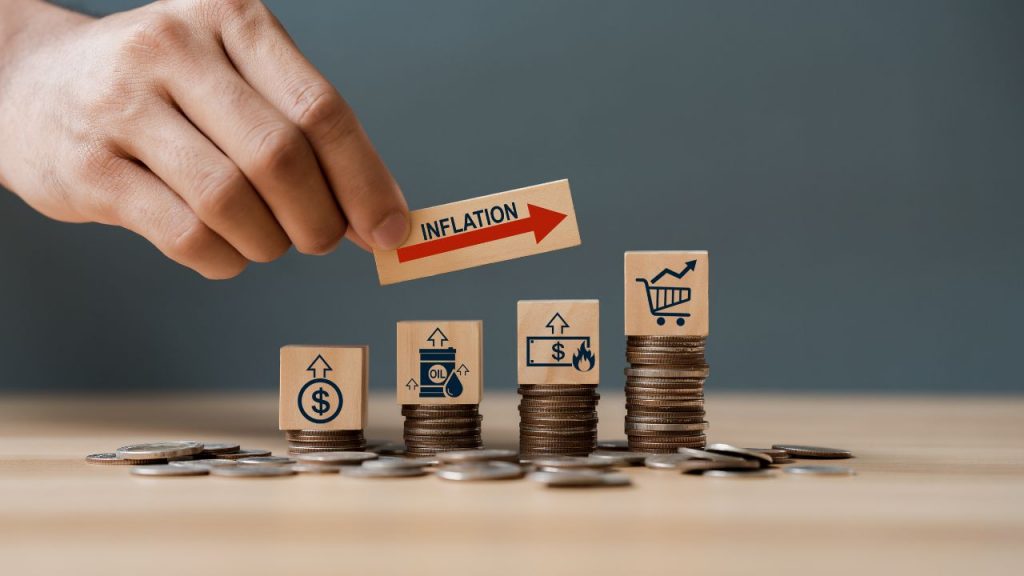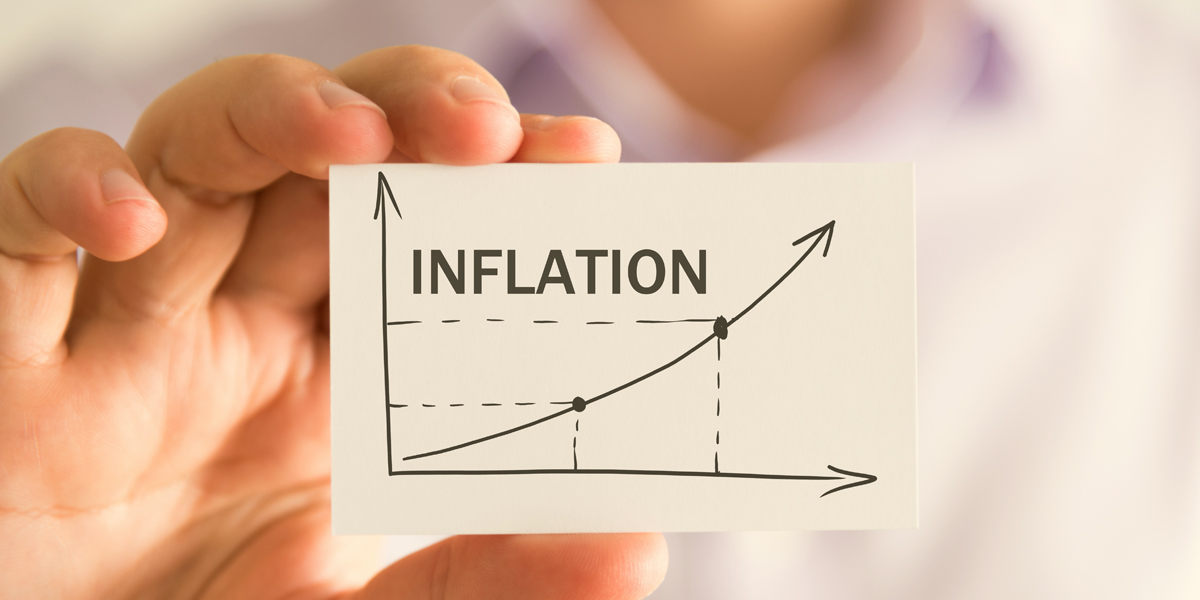Inflation is a key economic indicator that measures the increase in the general price level of goods and services over a specific period. It is an essential concept for individuals, businesses, and governments to understand as it has a significant impact on various aspects of the economy. By tracking the rate of inflation, policymakers and central banks can assess the health of the economy and make informed decisions regarding monetary and fiscal policies. Consumers, on the other hand, can use inflation data to plan their budgets, make purchasing decisions, and gauge the overall cost of living. Inflation also has implications for investments, wages, and the standard of living. Therefore, comprehending and monitoring inflation statistics is crucial for individuals, businesses, and policymakers to navigate through economic conditions and make informed financial decisions.
Overview of the Impact of Inflation
One of the key impacts of inflation is on the standard of living. As prices rise, the purchasing power of our money diminishes, making it more difficult to afford the same level of goods and services. This is particularly challenging for individuals on fixed incomes, such as pensioners, as it can erode their ability to maintain their desired standard of living.
Inflation also affects the stability of the economy. When inflation rates are too high, it can create uncertainty in the market as businesses grapple with increasing costs. This can lead to reduced investment and economic growth, ultimately impacting job opportunities and wages for workers.
High inflation has several other negative effects as well. It decreases the purchasing power of consumers, forcing them to spend more for the same goods and services. It also creates uncertainty in the cost of production for businesses, disrupting supply chains and leading to higher prices for consumers. Additionally, banks and central banks must closely monitor inflation to ensure that it does not spiral out of control, leading to financial instability.
Causes of Inflation
Inflation, the persistent increase in the general level of prices, is influenced by various factors that can affect the overall economy. One major cause of inflation is excessive growth in the money supply, as more money is available to chase the same amount of goods and services. This increase in demand leads to higher prices. Another key factor is cost-push inflation, where rising production costs, such as wages or raw materials, force businesses to increase prices. Demand-pull inflation occurs when there is an increase in consumer demand that outpaces the economy’s ability to supply goods and services. This can be driven by factors such as increased government spending or expansionary monetary policies. Additionally, supply disruptions, such as natural disasters or geopolitical events, can cause inflation by reducing the availability of certain goods and driving up their prices. Understanding these causes is crucial for policymakers and individuals alike to effectively manage and navigate through periods of inflation.

Cost-Push Inflation
Cost-push inflation refers to a situation where the general price level rises due to increased production costs. This rise in costs is often driven by various factors, such as higher oil prices and currency depreciation. Understanding the causes and effects of cost-push inflation is crucial for policymakers, businesses, and consumers alike.
Higher oil prices contribute significantly to cost-push inflation. When oil prices increase, it directly affects the production costs of many goods and services. Transportation costs rise, leading to higher prices for consumer goods and energy consumption. As businesses pass on these increased costs to consumers, the overall price level rises, creating inflationary pressures.
Currency depreciation is another factor that can lead to cost-push inflation. When a country’s currency weakens relative to other currencies, the costs of imported goods increase. This, in turn, raises the cost of inputs for businesses, forcing them to increase prices to maintain profitability. The depreciation of the currency can also raise costs for businesses that rely on imported raw materials or machinery.
The effects of cost-push inflation on the overall economy can be significant. It erodes purchasing power and reduces the standard of living for consumers. Businesses face higher costs, which can lead to reduced profit margins or lower output. Additionally, cost-push inflation can create uncertainty and volatility, affecting investment decisions and economic growth. Government programs also feel the impact as they may struggle with higher costs and budget constraints.
Demand-Pull Inflation
Demand-pull inflation occurs when there is excessive consumer demand for goods and services that exceeds the available supply. This type of inflation is driven by an imbalance between the quantity of goods and services demanded by consumers and the quantity supplied by producers. When the demand for goods and services surpasses the supply, prices tend to rise as suppliers can command higher prices due to increased demand.
One of the main factors that contribute to demand-pull inflation is high consumer confidence. When consumers have confidence in the economy and their financial situation, they are more likely to spend money on goods and services. This increased spending creates a surge in demand, resulting in upward pressure on prices.
Government spending is another factor that can contribute to demand-pull inflation. When the government increases its expenditure, it injects more money into the economy, which leads to higher aggregate demand. This increased demand can outpace the supply of goods and services, causing prices to rise.
Other factors that can contribute to demand-pull inflation include low-interest rates, which stimulate borrowing and spending, and favorable credit conditions, which make it easier for consumers and businesses to access loans and make purchases.
Understanding the factors that contribute to demand-pull inflation is crucial for policymakers and central banks. By monitoring consumer confidence, government spending, and other economic indicators, they can take appropriate measures to mitigate the impact of excessive demand on prices and maintain price stability.
Measuring and Understanding Inflation Stats
Measuring and understanding inflation statistics is crucial for individuals, businesses, and policymakers alike. Inflation, defined as the increase in the general price level of goods and services over some time, has a direct impact on the purchasing power of consumers, the profitability of businesses, and the overall stability of the economy. By closely monitoring inflation stats, stakeholders can make informed decisions regarding investments, savings, wage negotiations, and monetary policies. Additionally, understanding inflation allows businesses to adjust pricing strategies, forecast future costs, and assess the health of supply chains. Policymakers utilize inflation stats to gauge the effectiveness of fiscal and monetary policies and make adjustments to maintain a stable and healthy economy. In short, measuring and understanding inflation stats provides crucial insights into the current and future state of the economy and enables individuals and organizations to make sound financial decisions.
Consumer Price Indexes (CPI)
Consumer Price Indexes (CPI) play a crucial role in understanding the impact of inflation on consumer prices and economic stability. The CPI is computed by the Bureau of Labor Statistics (BLS) based on the changes in prices of a market basket of goods and services. This market basket represents a wide variety of consumer goods and services purchased by urban consumers.
The process of determining the CPI involves three key steps. Firstly, the BLS creates a market basket that reflects the typical spending habits of urban consumers. This market basket contains thousands of specific items, ranging from food and housing to transportation and healthcare. Secondly, a sample is selected from over 23,000 retail and service providers nationwide to represent the prices of these items. Finally, the BLS calculates the CPI by comparing the current prices of the items to those in a base period and applying appropriate weights to reflect changes in consumer spending behavior over time.
The CPI is widely used as an economic indicator to monitor inflation’s effect on consumer prices. It helps policymakers, businesses, and consumers understand changes in the cost of living, estimate adjustments to wages and retirement benefits, and make informed decisions.
Additionally, the CPI is used as a deflator for other economic series to remove the impact of inflation and analyze real changes in economic variables. By dividing nominal values by the CPI, economists can adjust variables such as gross domestic product (GDP) and personal income to accurately reflect changes in purchasing power over time.
As an essential measure of inflation, the CPI offers valuable insights into the state of the economy, allowing for informed decisions regarding monetary policy, fiscal policy, and maintaining a healthy economy.
Core Inflation Rates vs. Headline Rates
When analyzing inflation statistics, it is important to understand the difference between core inflation rates and headline rates. While both measures track the overall change in prices, they focus on different aspects of inflation.
Headline rates reflect the total change in consumer prices, including all items in the market basket. This includes both volatile and non-volatile components of the economy, such as energy and food prices, which can be subject to temporary shocks or fluctuations. On the other hand, core inflation rates strip out the more volatile elements of the market basket and focus on price changes that are more widespread and persistent.
By excluding items that are more prone to short-term changes, such as energy and food prices, core inflation rates help identify the underlying trend of inflation. This allows policymakers and analysts to have a clearer understanding of the overall inflationary pressure in the economy, beyond one-time changes or temporary fluctuations. Core inflation rates provide a more stable measure of inflation over time and are useful for making informed decisions regarding monetary policy and economic planning.
Money Supply Increases or Decreases
Money supply refers to the total amount of money circulating in an economy at a given time. It plays a crucial role in determining the level of inflation in an economy. Understanding the relationship between money supply and inflation is essential for policymakers and analysts.
When the money supply increases, it leads to an increase in overall spending power in the economy. This can result in excessive demand for goods and services. When demand outstrips supply, prices tend to rise, leading to inflation. On the other hand, if the money supply decreases, there is less spending power in the economy, which can lead to a decrease in prices, known as deflation.
Factors that can contribute to an increase in money supply include government policies such as fiscal stimulus programs, where the government injects money into the economy through increased spending or tax cuts. Central banks can also increase money supply through open market operations or by lowering interest rates, making it easier for banks to lend money.
Conversely, factors that can lead to a decrease in money supply include government austerity measures, where spending is reduced, and central banks raising interest rates or implementing tighter monetary policies to control inflation.
Inflationary monetary policies aim to stimulate economic activity by increasing money supply. This can result in higher inflation rates but may also lead to faster economic growth. Deflationary monetary policies, on the other hand, focus on reducing the money supply to control inflation. While this can lower inflation rates, it may also slow down economic growth.
Effects of High or Low Rates of Inflation
Inflation, whether high or low, can have significant effects on the economy and individuals. High rates of inflation can erode purchasing power, making goods and services more expensive for consumers. This can lead to a decreased standard of living and a decline in consumer demand. Additionally, high inflation can create uncertainty and instability in the economy, making it difficult for businesses to plan and invest for the future. On the other hand, low rates of inflation can indicate a stagnant or slow-growing economy. While low inflation may be beneficial in terms of stable prices, excessively low or negative inflation can be a sign of deflation, which can have detrimental effects on economic growth and employment. Policymakers, central banks, and individuals need to understand the effects of high or low inflation rates to make informed decisions and mitigate any negative impacts on the economy and personal financial well-being.

Economic Conditions and Unemployment Rates
Understanding inflation statistics is crucial for comprehending economic conditions and unemployment rates. Inflation, which refers to the increase in the general level of prices over time, has a significant impact on various aspects of the economy.
Firstly, inflation affects economic conditions by influencing the purchasing power of consumers. When prices rise, consumers may have to spend more on goods and services, resulting in a decrease in their overall purchasing power. This can lead to a decrease in consumer demand, subsequently affecting businesses and potentially leading to slower economic growth.
Unemployment rates are also affected by inflation. High inflation can lead to an increase in production costs for businesses, resulting in a reduction in their profit margins. In response, businesses may implement cost-cutting measures, such as reducing their workforce. This can lead to higher unemployment rates as businesses strive to maintain their profitability.
Furthermore, high inflation can have a significant impact on individuals with low incomes. As prices rise, individuals with limited financial resources may struggle to meet their basic needs, potentially worsening income inequality. This can have long-lasting effects on social and economic stability.
Overall, understanding the impact of inflation on economic conditions and unemployment rates is crucial for policymakers, businesses, and individuals. By monitoring and analyzing inflation statistics, it becomes possible to make informed decisions regarding monetary and fiscal policies to maintain a stable and healthy economy.
Standard of Living & Increase in Prices
Inflation has a direct impact on the standard of living and the increase in prices. As the general level of prices rises, individuals and households are faced with a higher cost of living, meaning they need to spend more money to maintain their desired standard of living.
The increase in prices can be felt across various sectors of the economy, including housing, transportation, food, and healthcare. When prices rise, individuals have to allocate more of their income towards necessary expenses, leaving less money available for discretionary spending and savings. This can lead to a decrease in the overall quality of life and limit the ability to meet financial goals.
One of the key effects of inflation is its impact on the purchasing power of individuals. This means that the same amount of money can buy fewer goods and services than before. Inflation erodes the value of savings and reduces the ability to make meaningful purchases or investments.
Moreover, inflation affects different segments of society differently, further impacting the standard of living. Individuals with fixed incomes, such as retirees or those on social assistance, may face significant challenges in maintaining their desired standard of living when prices rise. Additionally, households with lower incomes may struggle to afford necessities and experience a decline in their living standards as a result.
Impact on Central Banks’ Monetary Policies
Inflation statistics play a crucial role in shaping the monetary policies of central banks. Central banks, such as the Federal Reserve, closely monitor inflation rates to assess the health of the economy and make informed decisions regarding monetary policy.
The Federal Reserve, in particular, implements monetary policy in the United States. One of its key tools is adjusting the money supply. When inflation rates rise, central banks may take measures to tighten monetary policy by reducing the money supply. This can be done through actions such as increasing interest rates or selling government securities. These actions aim to curb spending and control inflation by making borrowing more expensive and reducing the amount of money available in the economy.
Conversely, during periods of low inflation or deflation, central banks may opt for expansionary monetary policy to stimulate economic growth. They may lower interest rates or purchase government securities, injecting more money into the system to encourage borrowing and spending.
Changes in inflation rates have a direct impact on central banks’ decisions. If inflation is rising rapidly, central banks may prioritize stabilizing prices through tightening monetary policy. On the other hand, if inflation is too low or below targets, central banks may choose to loosen monetary policy to stimulate economic activity.
Conclusion
In conclusion, the findings from the LASSO analysis offer valuable insights into the driving forces behind inflation and its impact on consumer expectations. Understanding these relationships is crucial for policymakers, economists, and businesses to make informed decisions and effectively manage inflationary pressures.

